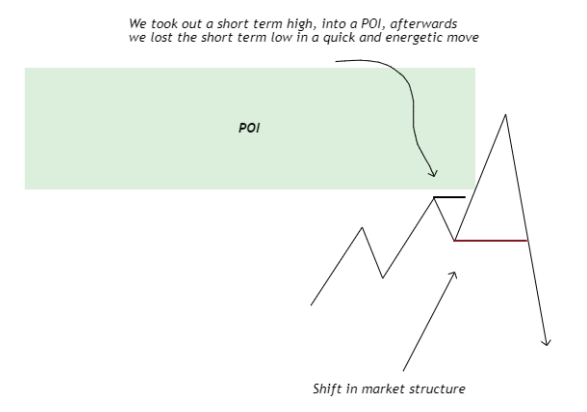How to Pivot Your Business in a Downturn

In the ever-changing landscape of business, economic downturns are inevitable. They can strike like a sudden storm, leaving even the most seasoned entrepreneurs scrambling for cover. But what if you could turn this storm into an opportunity? What if you could pivot your business to not only survive but thrive in the face of adversity? This guide will show you how to pivot a business during an economic downturn, turning crisis management into a springboard for innovation and growth.
Understanding the Need for Business Resilience
Business resilience is not just about weathering the storm; it's about adapting and evolving. In times of economic changes, market shifts are inevitable. Companies that can anticipate and respond to these shifts are the ones that stand the test of time. Take, for example, Netflix. Originally a DVD rental service, Netflix pivoted to streaming when it saw the market shifting towards digital content. Today, it's a global entertainment powerhouse.
Identifying the Signs of an Economic Downturn
Before you can pivot, you need to recognize the signs of an economic downturn. These can include a decrease in consumer spending, increased unemployment rates, and a decline in GDP. Staying informed about economic indicators can help you anticipate a downturn and start planning your pivot early. Resources like the World Economic Forum and the International Monetary Fund can provide valuable insights.
Assessing Your Business for Pivot Potential
Once you've identified a potential downturn, it's time to assess your business for pivot potential. Ask yourself:
- What are our core strengths and weaknesses?
- What market shifts are affecting our industry?
- What new opportunities can we capitalize on?

Developing Innovation Strategies
Innovation is the lifeblood of a successful pivot. It's about more than just creating new products or services; it's about reimagining your business model. Consider the following innovation strategies:
Diversifying Your Revenue Streams
Diversification can help insulate your business from economic shocks. For example, if you're a restaurant owner, you might pivot to offering meal kits or starting a food delivery service.
Leveraging Technology
Technology can open up new avenues for growth. For instance, a brick-and-mortar store might pivot to e-commerce, using platforms like Shopify or WooCommerce to reach a wider audience.
Repositioning Your Brand
Sometimes, a pivot involves repositioning your brand to appeal to a different market segment. For example, a luxury brand might introduce a more affordable line to cater to budget-conscious consumers.
Implementing Your Pivot Plan
Once you've developed your innovation strategies, it's time to implement your pivot plan. This involves several key steps:
Communicating with Your Team
Clear communication is crucial during a pivot. Your team needs to understand the reasons behind the change and their role in making it a success.
Testing and Iterating
A pivot is not a one-and-done deal. It's an iterative process that involves testing, gathering feedback, and refining your approach.
Monitoring Market Conditions
Economic conditions can change rapidly, so it's important to stay vigilant. Tools like Google Trends can help you track market shifts and adjust your pivot strategy accordingly.

Case Studies: Successful Business Pivots
Let's look at some real-world examples of successful business pivots:
Airbnb
Originally a platform for renting air mattresses and shared spaces, Airbnb pivoted to offering entire homes and unique experiences. Today, it's a global hospitality giant.
Slack
Slack started as a gaming company but pivoted to developing a workplace communication tool. It's now one of the most popular business messaging platforms.
Conclusion: Embracing Change as an Opportunity
Pivoting your business in a downturn is not just about survival; it's about embracing change as an opportunity for growth. By understanding the need for business resilience, identifying the signs of an economic downturn, assessing your pivot potential, developing innovation strategies, and implementing your pivot plan, you can turn a crisis into a catalyst for success.
Remember, every challenge is an opportunity in disguise. So, are you ready to pivot your business and thrive in the face of adversity?
FAQs
What is a business pivot? A business pivot is a significant change in strategy designed to improve a company's growth trajectory. It involves shifting focus to new products, services, or markets.
How can I identify opportunities for a pivot? Identifying opportunities involves staying informed about market trends, understanding your business's strengths and weaknesses, and being open to new ideas and innovations.
What are some common mistakes to avoid when pivoting? Common mistakes include failing to communicate effectively with your team, not testing and iterating your pivot strategy, and ignoring market conditions.
How can technology help in a business pivot? Technology can open up new revenue streams, improve operational efficiency, and help you reach a wider audience. It's a powerful tool for driving innovation and growth.
What role does branding play in a successful pivot? Branding is crucial in a pivot as it helps reposition your business in the minds of consumers. A strong brand can make the transition smoother and more successful.
Belum ada Komentar untuk "How to Pivot Your Business in a Downturn"
Posting Komentar